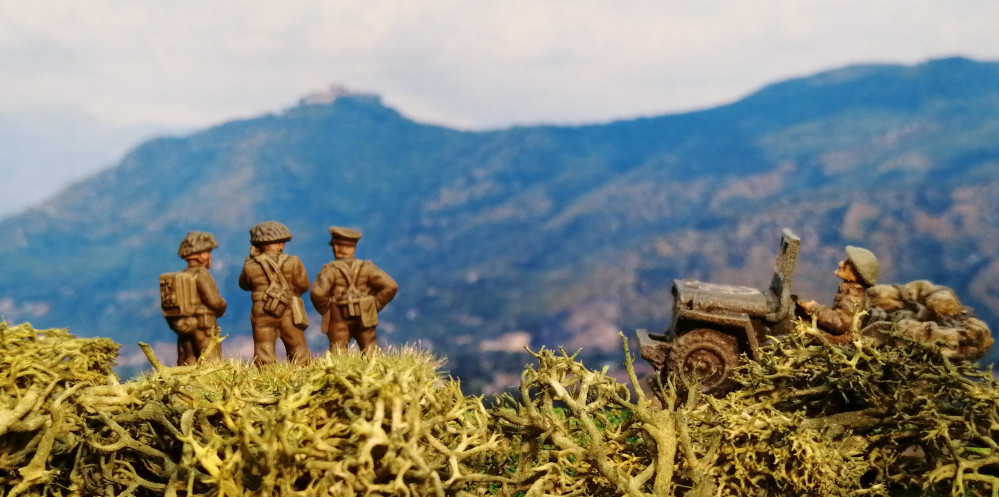
75th Anniversary of the Battle of Monte Cassino and Northern Italy (Gaming The Battles)
The Allied Invasion of Mainland Italy
With Sicily in Allied hands and Mussolini removed, the Allies considered their plans for mainland Italy. With the Italian army all but removed from the fight, more aggressive plans could be considered, with the eventual plan calling for the British 8th Army to cross the Straits of Messina and land at the Southern tip of Italy. It was hoped that this initial landing would divert German forces into Calabria, away from the main landing point of Salerno, on the West coast south of Naples.
Operation Baytown was launched on 3rd September 1943. Two Divisions from 8th Army crossed the Straits of Messina and landed almost unopposed on mainland Italy, with the Italian defenders surrendering almost immediately. They advanced inland, meeting only minor opposition from 15th Panzer Grenadier Regt, who were ordered to delay the British to allow other German forces to withdraw.
The Germans offered little opposition beyond destroyed bridges and other engineering obstacles. The 8th Army’s progress was slow as every obstacle had to be tackled as the surrounding terrain offered no options for bypassing them. It quickly became apparent that the Germans did not fall for the diversion tactic and made no move to intercept the British who now had over 450KM to cover to meet up with the planned US landings at Salerno.
With the formal surrender of Italy announced on 8th September, German forces in the country disarmed local Italian units and took up their positions. The Italian navy sailed to Allied ports to surrender and what was left of Italian resistance was removed. A day later, on the 9th September, elements of the 8th Army landed unopposed at Taranto on the Southern coast of Italy. They found the port largely intact and were quickly able to disembark and begin advancing up the East coast, reaching Bari by 11th September.
Operation Avalanche
General Mark Clark’s US 5th Army started Operation Avalanche, the codename for the beach landings at Salerno, on 9th September. Comprising US VI Corps, British X Corps and 82nd Airborne Division in reserve, they were well supported by US and British naval power in the Mediterranean. The invasion covered a long stretch of coastline, approximately 56km which given the limited availability of troops, was ambitious. Furthermore, the coastline curved around, creating a large cove, resulting in any front being much longer that the beach. The Sele River also split the attackers, creating problems for linking up.
The German defence had been reorganised into the newly formed Tenth Army, commanded by Heinrich von Vietinghoff and comprising 2 Corps with a total of 6 Divisions. Among these were the elite Herman Goring Panzer Division and 1st Fallschirmjager. Albert Kesselring still had overall command of Southern Italy.
The Northern element of the Salerno landings were carried out by British X Corps. The US Rangers and Commando units landed largely unopposed and quickly pushed in land to secure the necessary roads and bridges North to Naples. The rest of X Corps, 46th and 56th Infantry Divisions, who landed South of the Commandos and North of the Sele River met fierce resistance from the 16th Panzer Division and were only able to secure the beach head due to the support of the big naval guns offshore.
To the South of the Sele River, 36th (Texas) Infantry Division struggled to gain a foothold. German observers from the hills overlooking the Salerno beaches were able to direct artillery fire onto the landing craft and beaches with some accuracy. Despite the incoming fire and the attention of the Luftwaffe, 142nd Infantry and 143rd Infantry Regiments of the 36th Division did manage to make progress in land. The 141st Regiment however were pinned down on the beach, making necessary additional supply landings impossible.
In response, the German defenders quickly moved their reinforcements into position to encircle the beach head. The Allies spent several days making slow gains inland and by 12th September, X Corps had advanced around 10km inland but were lacking men to continue to push and had started digging in. To the South, 36th Division had gained around 8km of ground however Allied troops were not landing quickly enough and with the build up in German reinforcements, a counter attack was expected at any time.
The German counter attack started on 13th September. The main attack came roughly where the two Allied Corps met and two German battle groups engaged the US 36th Infantry Divsion and pushed them back. The battle groups continued to drive South West, pushing deep into Allied territory. It was eventually halted although only by naval gunfire and artillery firing over open sights. The counter attack had pushed far enough into Allied territory to make evacuation a consideration but rather than take such drastic action, the US VI Corps decided to enact a partial withdrawal to reduce the front that they had to defend.
The Germans continued their counter offensive on the 14th September, attacking along most of the Allied beach head. During the day, naval gunfire and artillery pounded the Germans while every available Allied aircraft was airborne straffing and bombing. The German losses, particularly in tanks, was high and they failed to achieve any significant break through.
Allied air attacks continued on the 15th September and began to force the Germans back on to the defensive. The continued pounding from the naval fleet was taking its toll and further attempts by the Germans to counter attack failed.
Meanwhile, the British 8th Army was continuing its slow advance up Italy. By 16th September, advanced patrols from the 8th Army made contact with the Southern most elements of the 36th Infantry Division. Relief was at hand for the Allied troops at Salerno. The arrival of 8th Army, coupled with the relentless naval and air bombardment caused the German Tenth army to request a withdrawal to which Kesselring agreed. German troops began withdrawing North on 18th September.
With the Salerno beach landings now secure, US 5th Army turned North toward Naples. British X Corps was tasked with taking the city and armoured cars from 1st Kings Dragoon Guards entered the city on 1st October. US 5th Army reached the Volturno River on the 6th October. Meanwhile, the British 8th Army had turned East and crossed the Apennine Mountains and were busy pushing up the East coast.
Volturno Line and North to the Gustav Line
US 5th Army crossed the Volturno river on the night of 12 October and engaged the defending German forces. The defenders had not had long to prepare their defences and engaged in a fighting withdrawal while the Americans advanced. German forces gradually fell back to a much better prepared defensive line – the Bernhardt line – further North.
On the East coast, the British 8th army crossed Biferno river on 3rd October and began their assault on the defensive positions. This progressed well until the redeployed 16th Panzer Division arrived on the 4th October and launched a counter offensive. 8th Army struggled to support the Infantry North of the river due to a lack of bridging equipment and heavy rains having washed away make shift fords. By 5th October, British infantry had been pushed back and were taking heavy losses but efforts by the engineers to put in place a bridge were successful and Canadian and British armour raced the infantry’s support. They were eventually able to push the Germans back who eventually began to withdraw to North of the River Trigno.
The British 8th Army were now strung out along the East coast with well over 100km separating their front forces to their rear. Poor weather, destroyed bridges and damaged roads had caused numerous delays and supplies were struggling to reach the front effectively. Upon reaching the River Trigno, Montgomery decided to halt and reorganise to facilitate a better assault. It wasn’t until 2nd November that the 8th Army were ready to launch their attack when the 78th Infantry Division along the coast and 8th Indian Division inland crossed the river. Fighting was fierce but by the end of the day, German forces withdrew to the Gustav line.
Back on the West coast, the US 5th Army had been advancing up Route 6 and encountered the German defenders on the Bernhardt Line, a 10km deep defensive line, which ran through the town of San Pietro Infine. The town blocked the Mignano Gap and the only effective route North. It had taken the US 5th Army 5 weeks of heavy fighting to advance to San Pietro Infine and loses had been high.
German 15th Panzer Grenadier Division, on the surrounding hills, commanded an excellent view of the Allied advance and had to be removed before a more direct assault on San Pietro infine itself could take place. For a week, the 143rd Infantry Regiment of 36th Division attacked and were counter attacked before they could hold the Western hill. On the other side, 142nd Infantry Regiment, supported by 1st Italian Motorised Group, took Mount Lungo. With both sides of Route 6 now in US 5th Army hands, 141st Infantry Regiment could now assault the town itself. 16 Shermans were also sent forward however only 4 survived due to the mines and anti tank fire. After several assaults, the town was finally taken on 16th December and the Germans withdrew to the Gustav line further North. The US 5th Army had taken 16,000 casualties in the 6 weeks it took to break through the Bernhardt Line but could now advance on Monte Cassino and the formidable Gustav Line.









































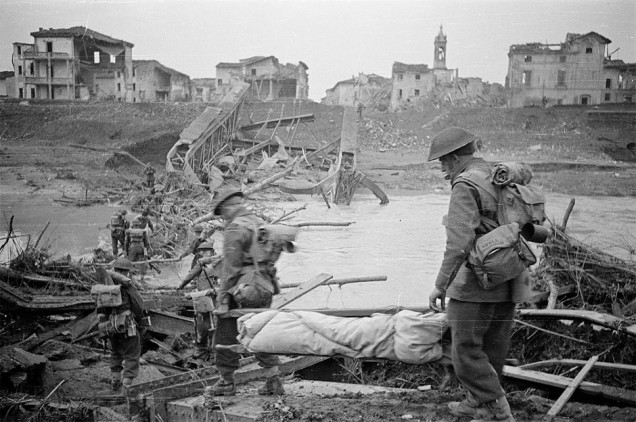
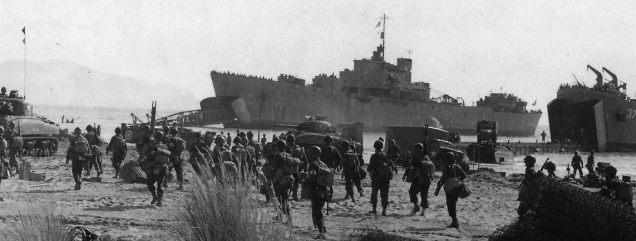
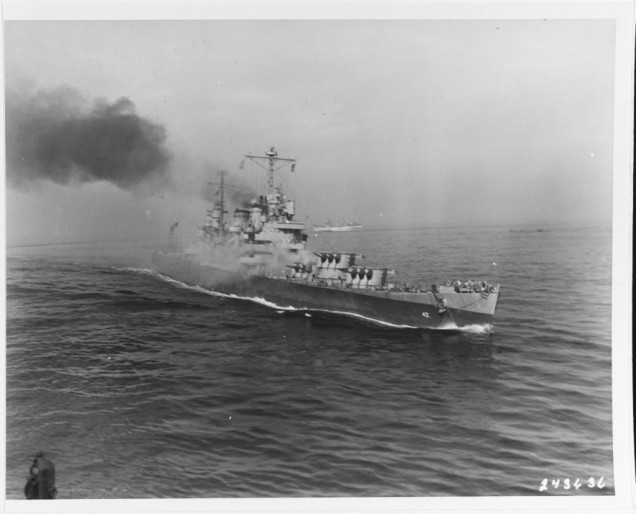
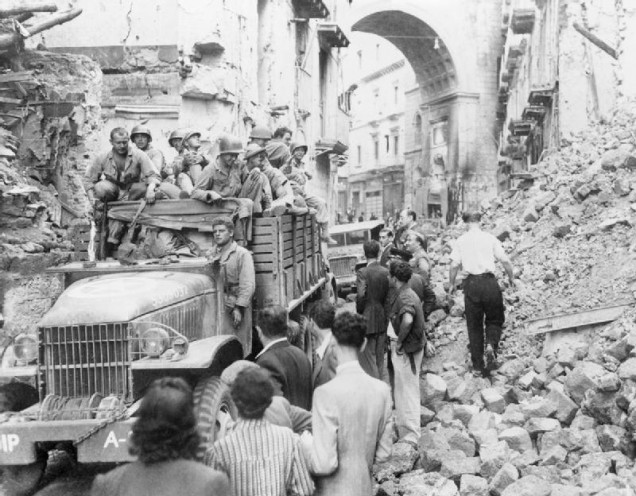


































Leave a Reply